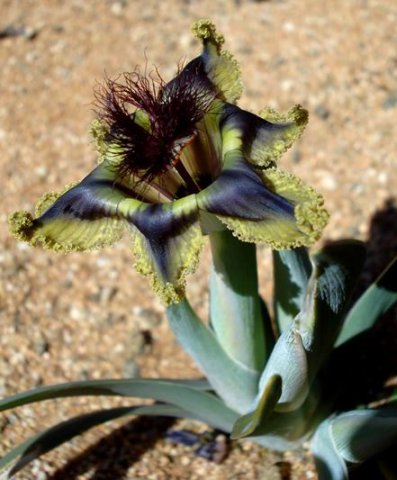Ferraria

Author: Ivan Lätti
Photographer: Judd Kirkel Welwitch
Ferraria is a genus of cormous, deciduous perennials in the Iridaceae family. A new corm forms annually from the base of the stem, above the corm of the previous year, becoming a string underground, the last one functional. The membranous corm tunics disappear quickly, making the genus unusual in its family.
The erect stems vary in length. They are usually covered by the overlapping sheaths of the leaves and are often branched in their upper parts. The sword-shaped, sickle-shaped or linear leaves are thick-bladed, slightly succulent and blue-green without a central vein.
The inflorescence grows rhipidium-shaped at a stem-tip, comprising two to six flowers. The mostly short-lived flowers have stalks covered by leaf-like spathes.
The six-tepalled corollas are variously coloured, sometimes dull in yellows and browns or blue and mottled, the tepal margins often differently coloured and crisped. Flower fragrances vary; nectar is produced at the tepal bases. The free tepals may be clawed and the outer tepals may be larger. The tepal bases form a cup, while the lobe tips spread or recurve.
The filament bases are united around the style, while free in their upper parts. The anthers are positioned against the style branches, usually concealed below them. The oblong to ovoid ovary is inferior, comprising three locules, sometimes extended or beaked above. The thread-like style divides into three branches above the column formed by the filaments. Each style branch divides into two flattened lobes ending in fringed crests.
The fruit capsules are oblong to ellipsoid. The seeds are globose or angled with smooth or wrinkled surfaces.
There are about 13 Ferraria species, all occurring in the south of tropical Africa through Namaqualand to the Western Cape. The plants are commonly known as spider irises and in Afrikaans as spinnekopblomme (spider flowers). Some species are pollinated by carrion flies.
The plant in picture is Ferraria divaricata (Leistner, (Ed.), 2000; Manning, 2007).

